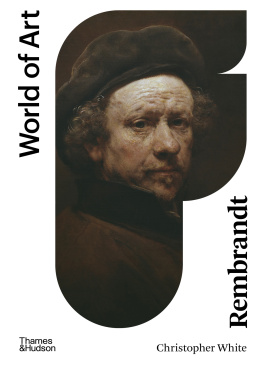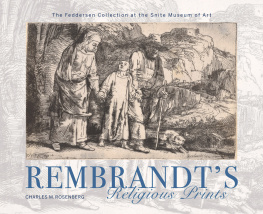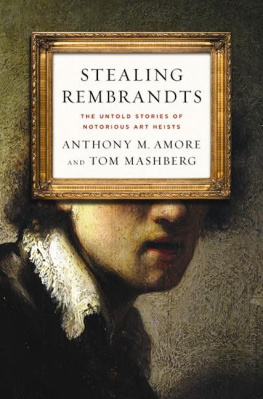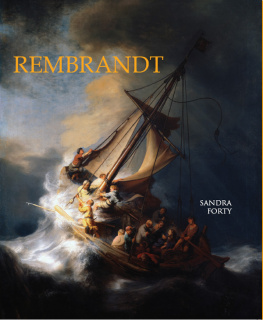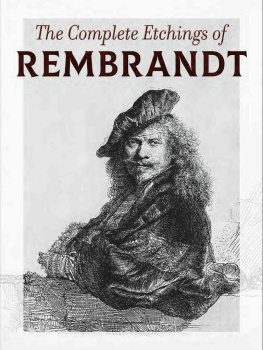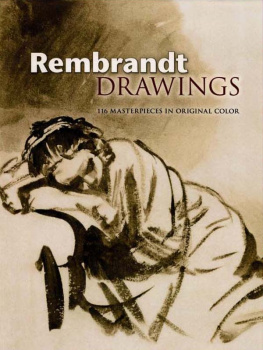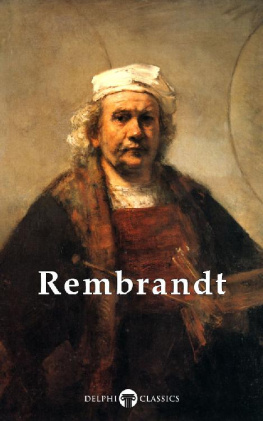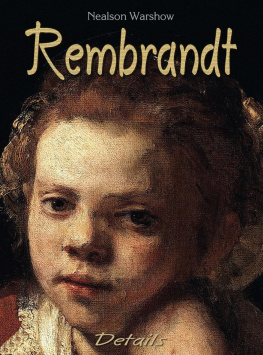


A Woman Bathing, 1654

About the Author
Christopher White has been Director of the Ashmolean Museum, and Fellow of Worcester College, Oxford, since 1985. He began his career in the Department of Prints and Drawings at the British Museum, London, and has since held the posts of Curator of Graphic Arts at the National Gallery of Art, Washington, D.C. (197173), and Director of Studies at the Paul Mellon Centre for Studies in British Art, London (197385). He has written widely on Dutch art, particularly on Rembrandt, and is also the author of books on Rubens, Van Dyck, Drer and the English landscape. His catalogues of the Later Flemish and Dutch pictures in the Royal Collection were published in 2007 and 2015 (second edition).
Contents
The relationship between life and art varies from artist to artist. Many leave no mark of the former on the latter, whereas others offer a virtual account of their existence. Rembrandt, however, stands in the middle. There is, for example, no incontrovertible image of his parents but they seem to have been used as avatars of old age. Although there is only one documented likeness of his first wife, Saskia, she certainly appears elsewhere in various guises. There are no certifiable likenesses of his second, common-law wife, Hendrickje, or his son, Titus, but they have been convincingly recognized in a number of works. Many studies of women and children drawn and etched in his early years may or may not have been based on his family nursery life. Numerous drawings and etchings made on walks around Amsterdam can be identified but they were almost never site specific; etched identifiable views, printed in mirror image, do not appear to have concerned the artist. It is safe to say that Rembrandt was rarely, if at all, either autobiographical or topographical; every experience served its purpose. In writing this book I have recorded the salient facts of his life alongside selected works, seeking to suggest the subtle relationship between the two.
20 Mai 1620 Rembrandus Hermanni Leydensis Studios[us] Litterarum Annor[um] 14 Apud Parentes. This brief notice of Rembrandts registration as a student at the University in Leiden is the very first reference to the artist.[] It is no more cryptic than the various documents referring to any great mans early years, but in Rembrandts case the situation remains much the same throughout his life. We have almost exclusively bare facts with no gloss: legal documents, church notices of baptisms and burials, and records of purchases of both property and works of art. With few exceptions they tell us no more than the events they record, and like Shakespeares laundry bill depend on our interpretation.
Literary sources are fortunately a little more illuminating, although Rembrandts own literary remains amount to no more than seven business letters, formal and dignified in tone, in which the writer never allows his personality to emerge. Contemporary accounts of his life and art are frequently positively misleading. Rembrandt never had a Condivi, the biographer of Michelangelo, nor would he have wanted one. Perhaps he got the biographers he deserved; certainly none of them put his point of view.
The two principal seventeenth-century biographies, both published after Rembrandts death, were written by the German artist and writer Joachim von Sandrart (1675) and by the Italian writer on art, Filippo Baldinucci (1686). The former had worked in Amsterdam from 1637 until the early 1640s, and would therefore have known the artist and his practice up to this time. On the other hand he wrote from a classicist point of view, which rendered much of Rembrandts art unsympathetic and deplorable. The Italian writer was entirely dependent on the testimony of a former pupil of Rembrandt, Bernhard Keil, who had left Amsterdam by 1651. Apart from the attitudes of the two writers, neither could speak with authority on the last twenty-five to thirty years of the artists life. The longest and most circumstantial life, written by the Dutch painter Arnold Houbraken, only appeared in 1718. Although as a pupil of Samuel van Hoogstraten, in turn a pupil of Rembrandt, he had direct access to first-hand knowledge, he wrote at a time when a combination of a classicist critique inimical to the late Rembrandt in particular and a mass of legend had developed. Yet although much of the criticism in these and other writings on the artist is often based on false premises and inaccurate information, enough of value remains to piece together with the known facts a reasonably rounded image of the artist.
Turning to Rembrandts art one soon discovers that no one has treated the human emotions more directly or more profoundly. One should be guided only by Nature and no other rules, he is supposed to have said and by and large he practised what he preached. He surrounds us with living, thinking people and invites us to converse with them, to share their joys and sorrows. They are so real that it is tempting to assume that they are an elaborate self-portrait and that his art is directly dependent on the events and emotions of his own life. But between the two there is often a wide gap. The detachment that any artist shows towards his daily existence is no less present in the work of Rembrandt, though it is more deceptively camouflaged.

Notice of Rembrandts registration as a student, 1620

Pieter Bast, View of Leiden (detail), 1601
The personality of the painter is elusive. From the numerous self-portraits he stares thoughtfully and directly, but with a great sense of withdrawal. He is watching as much as he is being watched. He does not yield up his secrets easily. He has all the reticence of a true Dutchman.
Rembrandt Harmenszoon van Rijn was born in Leiden on 15 July 1606, the son of Harmen Gerritszoon van Rijn and Neeltge van Suydtbroek. The date of his birth is significant, for only three years later Holland was to achieve the peace and freedom for which she had been fighting so doggedly. The Twelve Years Truce was Spains recognition of her independence. From war, the country was able to turn to more creative cultural and economic aims. It seems hardly fortuitous that Rembrandts life should span the most fertile period in Dutch history.
The town where Rembrandt was born was, thanks to its position at the centre of the cloth industry, rich and powerful in the seventeenth century, second in size only to Amsterdam. With the Old Rhine as a border on one side, Leiden was built along a wide canal, called the Rapenburg. Today it retains its essential character and allows us to sense the elegance and stateliness that was once part of its daily life. Above all, it boasted a famous university that attracted foreigners from all parts of the world. No other Dutch university approached it either in size or standards. Its pride was pardonable.
Next page
